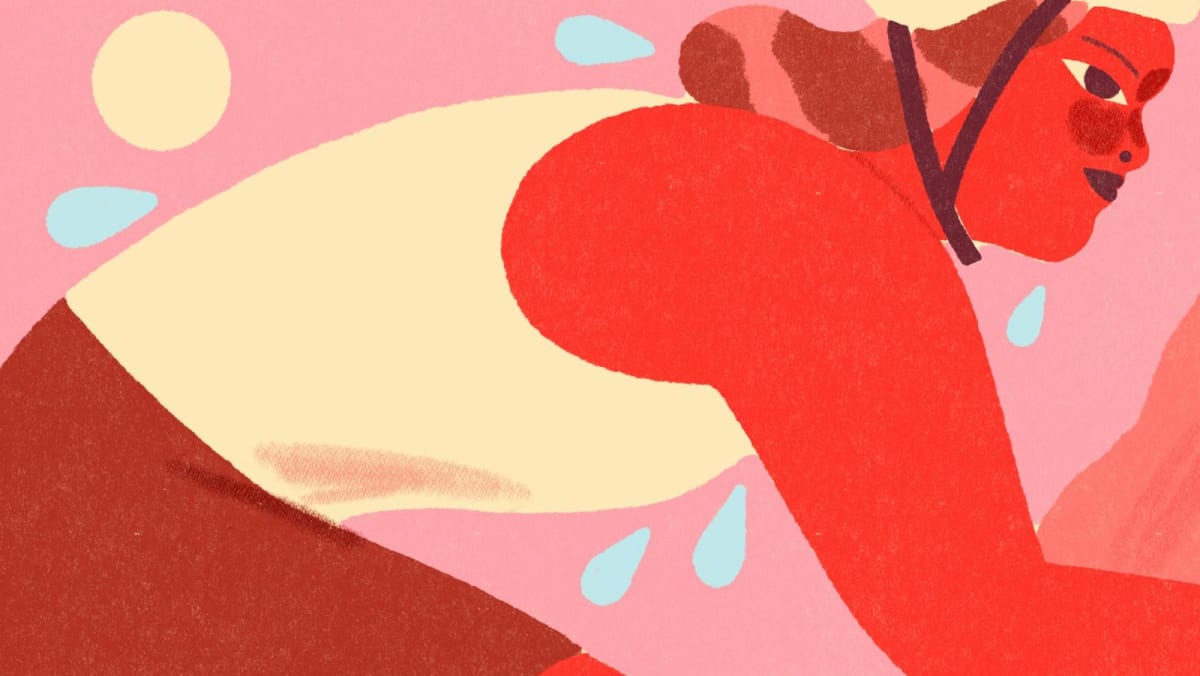Tish Hamilton is a veteran of 59 marathons and five ultramarathons. The 63-year-old former executive editor of Runner’s World also lives in Savannah, Georgia, where training through summer heat and humidity is a given. And while the conditions are unpleasant, she has come to appreciate them, knowing that come fall, she’ll perform at her best.
“I don’t think I ever get used to it,” Hamilton said, “but I know how good it’s going to feel once the humidity breaks.”
It’s not in her head. Research suggests that exercising in warm, humid conditions can provide what some call “poor man’s” altitude training – improving performance in endurance sports like triathlon, cycling and running.
In the first few weeks of training in hot conditions, your body sends more blood to the skin’s surface to create sweat. This leaves less of it for your muscles, which is one reason you often get tired more quickly in early summer.
But your body adjusts by creating more blood, as well as more red blood cells, over four or five weeks, similar to what happens to your body after three weeks at altitude. You may also experience a boost in your VO2 max, the maximum rate at which your body uses oxygen while exercising.
While you won’t necessarily feel the benefits during the thick of summer training, you likely will on the first cool days of fall.
“I’ve both experienced it personally and seen it with my athletes,” said Steve Magness, a running coach in Houston and author of The Science Of Running.” “All of a sudden you get a huge boost, and you realise that summer really did pay off.”
When summer is at its hottest, it’s certainly fine to take your workouts indoors. But if you’d like to take advantage of the summer’s payoff, here’s how to do it safely.
UNTIL YOU ACCLIMATE, ADJUST
Before you even begin training in the heat, it’s important to set expectations, Magness said. “You will go from feeling good to feeling miserable,” he explained. “Go slow, and don’t worry about your miles or workout intensity.”
Research varies on how long it takes to acclimate to summer conditions, but after about two weeks or so, you should begin to better tolerate higher temperatures and humidity.
“Start with small doses of training outside, like 30 minutes of easy activity,” said Jill Patterson, a cycling coach in Virginia and three-time national USA Cycling Gran Fondo champion. “Be consistent about getting out.” Once you start, try to spend a few workouts a week in the heat.
That’s not to say that you should torture yourself. If the midday heat is just too much where you live, try other times, but stay outside the whole 30 minutes if you can.
Plan to take more breaks, throw your normal pace out the window and pay close attention to how you’re feeling. Monitor your thirst level, and make sure to hydrate more often than usual. Any signs of dizziness, headaches, confusion or chills are red flags to call it quits.
Different exercisers will respond differently to heat training and you should talk to your doctor before beginning, especially if you have a medical condition. You can also try wearable patches that measure your sweat rate, fluid and sodium loss. For the best accuracy, wait until you’ve acclimated to the heat first.
If it helps, you can also cool down by putting ice in your hat or sports bra, or pouring cold water over your head.
TRAINING AFTER ACCLIMATION
Even after you acclimate to hotter conditions, you may never be as fast or feel as good as you do in cooler temperatures. But you should be able to handle a similar training level.
“Focus more on the feeling you want versus the pace you want,” Magness said. “If you want something harder, go after it, but be willing to stop or modify if you aren’t tolerating it well.”
For example, watch for a large jump in heart rate or breathing rate. Also pay attention to your ability to talk – if you could previously say a sentence at a certain speed but now can barely talk, dial it back or walk.
This is a good time to check your ego at the door, Hamilton said: “I switch from focusing on how many miles I’m running to how much time I’m on my feet.”
Keep an eye on the weather for days when the heat and humidity take brief breaks. “On those good days, do your favourite hard workout, and you’ll get an indication that your fitness has improved,” Magness said.
While you acclimatise in just a couple of weeks of heat training, you need to continue outdoor workouts to make gains and sustain them. You can maintain them on just a few sessions a week, until they begin to wane about a month after cooler temperatures set in.
Once fall arrives, you’ll get the reward you’ve worked so hard for all summer. “When you get that beautifully cool, low humidity day, you appreciate how much less effort it takes,” said Hamilton. “You feel like a million bucks.”
By Amanda Loudin © The New York Times Company
The article originally appeared in The New York Times.
